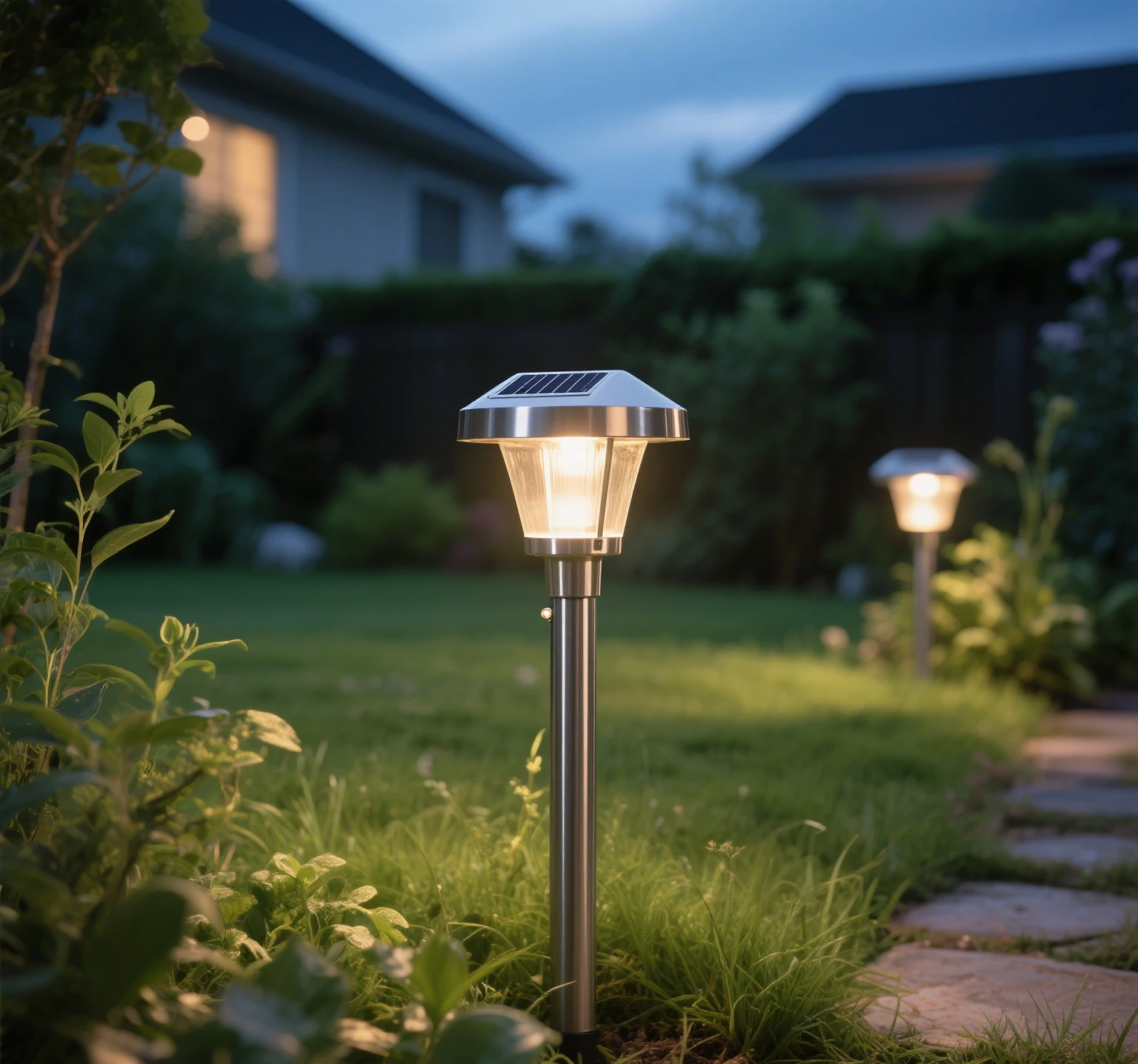Market Size and Growth Drivers
Market Size and Forecast
According to QYResearch, the global solar lawn light market was valued at approximately $6 billion in 2023, with the U.S., a core market, accounting for 35% or $2.1 billion. By 2030, the U.S. market is projected to grow at a compound annual growth rate (CAGR) of 12.5%, exceeding $4.5 billion. This growth is primarily driven by policy incentives from the Inflation Reduction Act (IRA) and rising consumer environmental awareness. For instance, the IRA offers a 30% tax credit for solar products, significantly reducing household installation costs.

Drivers
- Policy Support: The IRA extends solar tax credits to 2034 and introduces subsidies for domestic manufacturing, promoting localization of the U.S. solar supply chain. Companies using U.S.-made silicon wafers can benefit from additional cost deductions.
- Technological Advancements: Perovskite/silicon tandem solar cells have achieved efficiencies of 26.5%, with flexible designs enhancing outdoor applicability. Commercialization is expected by 2026.
- Consumer Trends: 70% of U.S. consumers prioritize eco-friendly products, and the DIY home improvement trend has boosted online sales to 45% of the market.
Technological Development and Product Innovation
Core Technological Breakthroughs
- Perovskite Cell Applications: Flexible perovskite/silicon tandem cells, developed by Tokyo Metropolitan University, achieve 26.5% efficiency, enabling lightweight and curved installations for solar lawn lights.
- Smart Connectivity: Companies like Ring have introduced IoT-enabled solar lawn lights, allowing users to adjust brightness and modes via smartphone apps. By 2025, these products are expected to account for 30% of sales.
Product Iteration Directions
- Efficient Energy Storage: Lithium-ion batteries are replacing nickel-cadmium batteries, extending lifespan from 2 to 5 years while meeting U.S. environmental standards.
- Design Innovation: Personalized designs (e.g., animal or plant shapes) and waterproofing (IP65 rating) are key differentiators. Retailers like Lowe’s have launched customized product lines.
Policy Environment and Supply Chain Impacts
Federal and State Policies
- IRA: Provides additional subsidies for domestically manufactured solar components, encouraging U.S. companies to expand production. For example, SEPCO Solar plans to increase capacity by 50% by 2025.
- California Net Metering Policy: Adjustments in 2024 offer higher compensation for rooftop solar users, indirectly boosting demand for outdoor solar products.
Supply Chain Adjustments
- Tariff Impacts: A 50% tariff on Chinese solar silicon wafers has increased import costs but accelerated domestic supply chain development. For instance, First Solar’s Ohio plant will begin production in 2025.
- Raw Material Volatility: Polysilicon prices, affected by global supply and demand, fluctuated by 20% in 2024. Companies are stabilizing costs through long-term contracts.
Competitive Landscape and Company Dynamics
Major Company Analysis
- International Brands: Philips and Jiawei Renewable Energy (China) dominate the mid-to-high-end market with cost-effective products, holding 18% and 15% market shares in 2023, respectively.
- Domestic Companies: Sunco Lighting and Gama Sonic focus on smart product development, launching voice-controlled products in 2024 to capture the smart home market.
Market Concentration
The industry’s CR5 (top five companies) accounts for 45% of the market. Leading companies are consolidating resources through acquisitions. For example, Signify (formerly Philips Lighting) acquired Greenshine New Energy in 2024 to strengthen its North American distribution network.
Challenges and Risks
Intensifying Market Competition
Chinese companies are circumventing tariffs by establishing factories in Southeast Asia, employing low-price strategies. For instance, Jiangsu Kaiyuan Solar Lighting Group’s Vietnam plant offers products 25% cheaper than U.S.-made alternatives.
Technological Substitution Risks
Wind-powered lighting and low-power LED technologies may divert some demand, though solar lawn lights maintain an advantage due to easy installation.
Policy Uncertainty
Changes to federal tax credits or subsidy thresholds could impact short-term demand. For example, Georgia proposed restrictions on Chinese companies’ participation in government procurement in 2024.
Future Outlook and Recommendations
Trends for 2025-2030
- Technology Integration: Perovskite cells and IoT technologies will become mainstream, with smart products expected to account for 60% of the market by 2030.
- Market Segmentation: The high-end market (e.g., villas) will prioritize design and smart features, while the mass market will focus on cost-effectiveness and durability.
- Regional Expansion: The Midwest (e.g., Texas), with abundant sunlight, will be the fastest-growing region, with a CAGR of 15%.
Strategic Recommendations for Companies
- Localized Production: Leverage IRA subsidies to establish U.S. assembly plants, mitigating tariff impacts.
- R&D Investment: Increase development of perovskite cells and smart control technologies to enhance product competitiveness.
- Channel Optimization: Strengthen partnerships with retailers like Home Depot and expand direct-to-consumer (DTC) online models.
Conclusion
Driven by policy support, technological advancements, and consumer upgrades, the U.S. solar lawn light industry is poised for rapid growth over the next five years. Companies must balance cost control with technological innovation while addressing supply chain security and policy changes to gain a competitive edge. By 2030, the U.S. is expected to become the largest single market globally, providing significant growth momentum for the global supply chain.


Leave a Reply